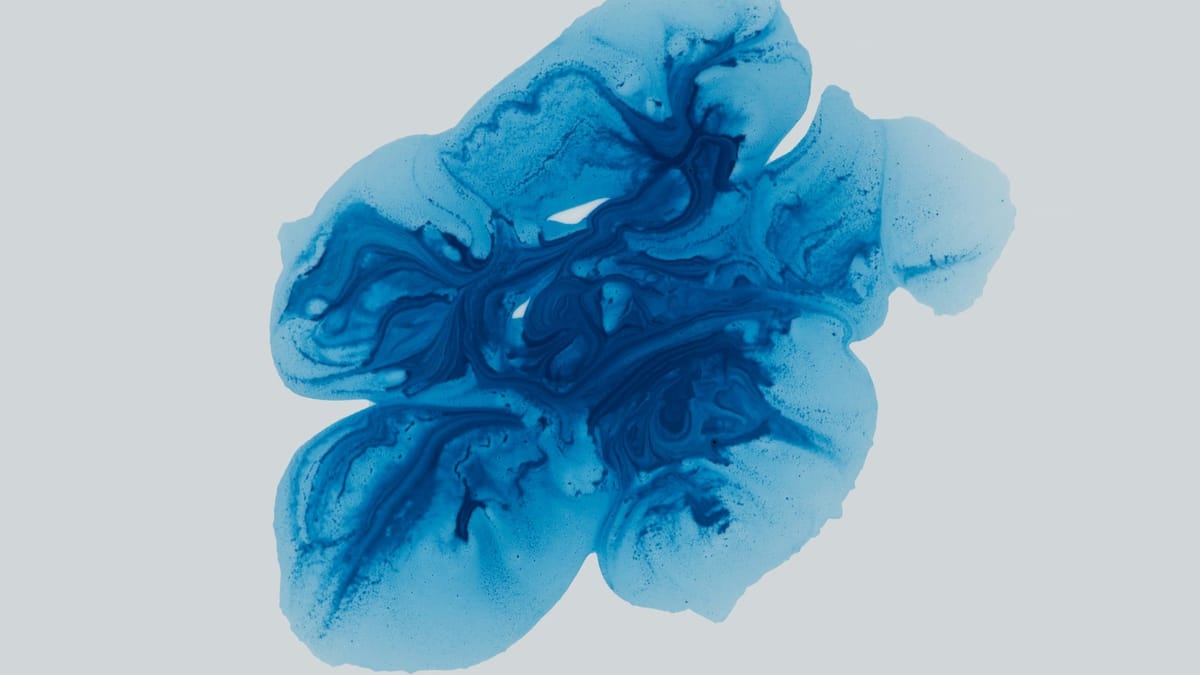The Surprising Link Between Methylene Blue and Cognitive Decline
What You Need to Know

Methylene blue (MB) is an organic compound known for its vivid blue colour and wide-ranging applications in various fields, including medicine, scientific research, and environmental science. Discovered in 1876 by Heinrich Caro, it was initially used as a dye before its medical and scientific potentials were recognized. Its chemical structure, C16H18ClN3S, classifies it as a heterocyclic aromatic compound.
Traditionally, MB has been used in medicine as a treatment for methemoglobinemia and as a staining agent in microbiology and histology. It also serves as a redox indicator in analytical chemistry and has shown potential in environmental applications, such as wastewater treatment. Recently, interest has surged in MB for its promising role in ageing research and mitochondrial health, highlighting its potential to impact longevity and cellular function.
Energising Cells and Combating Oxidative Stress
Methylene blue (MB) exerts diverse biochemical mechanisms that underlie its therapeutic effects. Primarily, it enhances mitochondrial function by acting as an alternative electron carrier in the electron transport chain (ETC), thereby promoting efficient ATP production crucial for cellular energy. MB also inhibits nitric oxide synthase, reducing levels of nitric oxide which can impair mitochondrial function at high concentrations.
Furthermore, MB exhibits potent antioxidant properties by scavenging reactive oxygen species (ROS), protecting cells from oxidative stress and damage. This antioxidative action includes hormetic effects, where low doses stimulate cellular defence mechanisms while higher doses may pose toxicity risks. Together, these mechanisms enhance mitochondrial function and bolster cellular resilience against stress.
Compared to other mitochondrial enhancers like Coenzyme Q10 (CoQ10), MB offers unique advantages. While CoQ10 supplements natural coenzyme levels to support mitochondrial function, MB's direct involvement in the ETC potentially provides a more potent enhancement of mitochondrial efficiency. This boost not only increases ATP production but also supports cellular repair mechanisms, crucial for maintaining overall cellular health and function.
Given its ability to mitigate oxidative stress directly by scavenging free radicals and enhancing antioxidant enzymes, MB holds promise in combating ageing and various diseases where oxidative stress plays a significant role. Particularly in neurodegenerative conditions like Alzheimer's and Parkinson's disease, MB's dual action in reducing oxidative damage and supporting mitochondrial health underscores its potential as a neuroprotective agent.
Implications for Aging, Longevity, and Therapeutic Applications
Methylene blue (MB) has shown significant potential in promoting longevity and mitigating the effects of ageing, sparking considerable interest in its applications. One critical aspect of ageing is cellular senescence, where cells lose their ability to divide and function properly. MB has been demonstrated to delay cellular senescence by enhancing mitochondrial function and reducing oxidative damage, both of which are vital for maintaining cellular health.
Telomeres, the protective caps at the ends of chromosomes, shorten with each cell division, contributing to cellular ageing. MB has shown promise in protecting telomeres from oxidative stress and even increasing telomerase activity, the enzyme responsible for maintaining telomere length. This protective effect on telomeres, combined with enhanced mitochondrial function, supports the longevity-promoting effects of MB observed in animal studies. Research on model organisms like fruit flies and nematodes has shown that MB supplementation can extend lifespan, likely due to its mitochondrial and antioxidative benefits. Comparatively, MB's effects on longevity are similar to other geroprotectors such as rapamycin and metformin, though through distinct mechanisms primarily focused on mitochondrial health.
Methylene blue’s diverse biochemical actions translate into several potential therapeutic applications. In neurodegenerative disorders such as Alzheimer’s and Parkinson’s diseases, MB’s neuroprotective effects are particularly promising. By enhancing mitochondrial function and reducing oxidative stress, MB may slow disease progression and improve cognitive function.
In cardiovascular health, MB’s ability to reduce oxidative stress and improve mitochondrial efficiency could benefit conditions characterised by mitochondrial dysfunction and oxidative damage. Additionally, MB’s role in cancer treatment, particularly in photodynamic therapy, leverages its properties as a photosensitizer to selectively destroy cancer cells. Its established use in treating methemoglobinemia underscores its clinical safety and efficacy, providing a strong foundation for its application in other therapeutic areas.
Overall, MB's multifaceted effects on cellular and mitochondrial health position it as a promising compound for both promoting longevity and addressing various therapeutic needs.
Safety, Side Effects, and Dosing Considerations of Methylene Blue
While methylene blue (MB) is generally considered safe, particularly at therapeutic doses, it is important to be aware of potential side effects and necessary precautions. The safety profile of MB is well-documented, yet it is not without risks. High doses or prolonged exposure can lead to a range of adverse effects, including blue discoloration of the skin and urine, which is typically harmless but can be alarming to patients. Gastrointestinal discomfort, such as nausea and abdominal pain, is also a common side effect. In rare cases, hemolytic anaemia, particularly in individuals with glucose-6-phosphate dehydrogenase (G6PD) deficiency, can occur, necessitating careful patient screening before administration.
Drug interactions are another critical consideration when using methylene blue. MB can interact with other medications, especially those affecting serotonin levels. This interaction can lead to serotonin syndrome, a potentially life-threatening condition characterised by symptoms such as confusion, agitation, rapid heart rate, and high blood pressure. Therefore, it is crucial to evaluate a patient’s medication regimen thoroughly to avoid such interactions.
Dosing considerations play a significant role in optimising MB’s therapeutic benefits while minimising risks. The route of administration—oral or intravenous—affects the bioavailability of MB. Intravenous administration typically offers higher and more immediate bioavailability compared to oral dosing, which may be preferred in acute medical conditions like methemoglobinemia. However, for chronic conditions or long-term use, oral administration might be more convenient and better tolerated.
The appropriate dose of MB depends on the condition being treated. For instance, lower doses may be sufficient for its nootropic and anti-aging effects, whereas higher doses might be required for acute treatments like methemoglobinemia or certain infections. Given MB’s wide-ranging effects and potential applications, careful monitoring and individualised dosing are essential to ensure safety and efficacy in clinical use.
Comparing methylene blue with other compounds used for similar purposes, such as nicotinamide mononucleotide (NMN) and nicotinamide adenine dinucleotide (NAD+), provides additional context for its safety and efficacy.
Both MB and NAD+ have been shown to reduce oxidative stress and enhance mitochondrial function, although through different mechanisms. MB acts as an alternative electron carrier in the mitochondrial electron transport chain, directly enhancing ATP production and reducing oxidative stress. In contrast, NMN and NAD+ serve as precursors for NAD+, a coenzyme essential for various cellular processes, including energy metabolism and DNA repair.
While all three compounds—MB, NMN, and NAD+—have demonstrated potential longevity-promoting effects in animal models, their side effect profiles differ. MB is generally well-tolerated but can cause side effects such as blue discoloration of the skin and urine, nausea, and, in rare cases, hemolytic anaemia. NMN and NAD+ are considered relatively safe; however, high doses may cause flushing, gastrointestinal discomfort, and potential liver toxicity.
While methylene blue shows great promise for a variety of therapeutic applications, it is crucial to consider its safety profile, potential side effects, and appropriate dosing strategies. Individualised treatment plans and careful patient monitoring can help maximise the benefits of MB while minimising risks. Ongoing research and clinical trials will continue to shed light on the optimal use of this multifaceted compound.
Current Research Landscape and Comparative Analysis of Methylene Blue
Recent years have witnessed a significant surge in research exploring the diverse applications of methylene blue (MB). Clinical trials are actively investigating its efficacy in treating neurodegenerative diseases such as Alzheimer's and Parkinson's. Early results are promising, suggesting that MB can enhance cognitive function, reduce oxidative stress, and improve mitochondrial health in human subjects. These trials are essential as they aim to translate preclinical findings into practical clinical applications.
However, the translation from preclinical to clinical success is fraught with challenges. Variations in dosage, administration routes, and individual patient responses necessitate meticulously designed clinical trials to establish standardised treatment protocols. This is crucial for ensuring the safe and effective use of MB across different patient populations.
A foundational study by Atamna et al., published in the FASEB Journal in 2008, demonstrated that MB can delay cellular senescence in human skin fibroblasts by improving mitochondrial function and reducing oxidative stress. This study is pivotal as it highlights the potential of MB to combat cellular ageing at a fundamental level, thereby supporting its use in longevity and age-related disease interventions.
In another significant study, Medina et al. (2020), published in Human Molecular Genetics, explored the effects of MB in models of Huntington's disease. The study found that MB can modulate huntingtin levels, reduce oxidative stress, and improve mitochondrial function. These findings suggest MB’s potential therapeutic application in managing neurodegenerative disorders, where oxidative damage and mitochondrial dysfunction play critical roles.
Despite these promising results, the current research landscape is dynamic and evolving. Ongoing studies are likely to provide deeper insights into MB’s therapeutic potential and pave the way for its broader clinical adoption. Researchers are particularly focused on addressing the challenges of dosage optimization and understanding individual variations in response to MB treatment.
Comparative analyses of MB with other compounds further enrich our understanding of its potential. For instance, Chakrabarti et al. (2021) in Cell Reports highlighted that nicotinamide mononucleotide (NMN), a precursor to NAD+, could rescue age-associated susceptibility to proteotoxicity in Drosophila. This comparison is crucial as it situates MB within a broader context of compounds with similar longevity-promoting effects. Both MB and NMN enhance mitochondrial function and reduce oxidative stress, albeit through different mechanisms.
MB's potential benefits are often compared to those of other known geroprotectors such as resveratrol, rapamycin, and metformin. Resveratrol, a polyphenolic compound found in plants like grapes and berries, and MB both exhibit antioxidant properties and potentially extend lifespan in model organisms. However, resveratrol activates pathways like SIRT1 and AMPK, whereas MB acts more directly on mitochondrial function.
Similarly, rapamycin, an immunosuppressant drug, has demonstrated lifespan extension by inhibiting the mTOR pathway, which regulates cell growth and metabolism. In contrast, MB’s effects are primarily through improving mitochondrial function and reducing oxidative stress. Metformin, widely used for managing type 2 diabetes, also shows promise in reducing oxidative stress and extending lifespan. While metformin improves insulin sensitivity and glucose metabolism, MB's benefits are more closely tied to mitochondrial function.
David Sinclair and Peter Attia, prominent figures in longevity research, have mentioned MB in their discussions. Sinclair, in various interviews and blog posts, has highlighted MB’s potential in improving mitochondrial function and extending lifespan, based on animal studies. Similarly, Attia has discussed MB as a potential longevity compound, citing its ability to enhance cognitive function and reduce the risk of neurodegenerative diseases.
While the research on methylene blue is promising, more comprehensive and well-designed clinical trials are needed to fully understand its efficacy, optimal dosages, and safety profiles in humans. The comparative analysis with other compounds further emphasises the unique mechanisms and potential therapeutic applications of MB in the realm of longevity and age-related diseases.
Blue Light Revelation: How Methylene Blue Illuminated Neuroscience's Path
Dr. Karl Deisseroth, a brilliant neuroscientist and bioengineer, faced a significant challenge while pioneering optogenetics—a revolutionary method using light to manipulate brain cells. Amidst his experiments, which aimed to illuminate the brain's inner workings, an unexpected breakthrough emerged: Methylene Blue. Traditionally known as a dye for staining cells and treating methemoglobinemia, Methylene Blue unexpectedly showed a unique affinity for absorbing light. This property piqued Deisseroth's curiosity—could this dye be repurposed to control neuronal activity?
Through rigorous experimentation, Deisseroth and his team discovered that Methylene Blue could indeed be a game-changer. By exposing brain tissue treated with Methylene Blue to specific wavelengths of light, they could activate or inhibit neurons with unprecedented precision. This finding opened a new frontier in neuroscience, allowing researchers to probe neural circuits and unravel complex brain functions with unmatched control.
What began as an exploration into how light could manipulate brain cells unexpectedly led to a transformative discovery, one that challenged conventional wisdom and pushed the boundaries of neuroscientific research. Methylene Blue's journey from a basic laboratory tool to a critical component in understanding and potentially treating neurological disorders exemplifies how innovation often arises from unexpected sources, reshaping our understanding of the brain and offering new hope for therapeutic interventions in conditions ranging from Parkinson's disease to depression.
Key Takeaways
- Historical Evolution: Methylene blue (MB), originally discovered as a dye in 1876, has evolved from its industrial origins to find significant medical applications, including treatment for methemoglobinemia and staining in microbiology.
- Biochemical Mechanisms: MB enhances mitochondrial function by serving as an alternative electron carrier in the electron transport chain (ETC), thereby boosting ATP production and reducing oxidative stress through ROS scavenging and modulation of nitric oxide levels.
- Therapeutic Potential: Its multifaceted properties position MB as a promising candidate for combating oxidative stress-related conditions and neurodegenerative diseases like Alzheimer's and Parkinson's, by protecting mitochondrial health and enhancing cellular resilience.
- Comparative Advantages: Compared to other mitochondrial enhancers like Coenzyme Q10 (CoQ10), MB offers direct involvement in ATP production and cellular repair mechanisms, potentially providing more potent therapeutic benefits.
- Safety Considerations: While generally safe, MB requires careful dosing and monitoring due to potential side effects such as skin discoloration and interactions with serotonin-affecting medications.
- Current Research Landscape: Ongoing clinical trials and comparative studies with compounds like nicotinamide mononucleotide (NMN) and resveratrol highlight MB's unique mechanisms and its potential role in promoting longevity and managing age-related diseases.
- Future Directions: Further research is needed to standardise dosing protocols, understand individual responses, and optimise MB's therapeutic efficacy across different patient populations, reflecting its dynamic role in advancing medical science.
Your Top Questions Answered
What are the potential applications of Methylene Blue in ageing and mitochondrial health?
Methylene Blue shows promise in enhancing mitochondrial function by serving as an electron carrier in the electron transport chain, thus boosting ATP production and reducing oxidative stress. Its antioxidant properties protect cells from damage, which could potentially mitigate ageing processes and support overall mitochondrial health.
How does Methylene Blue compare to Coenzyme Q10 (CoQ10) in enhancing mitochondrial efficiency?
Unlike CoQ10, which supplements natural coenzyme levels, Methylene Blue directly participates in the electron transport chain, potentially providing a more potent enhancement of mitochondrial efficiency. This direct involvement not only increases ATP production but also supports cellular repair mechanisms.
What are the safety considerations when using Methylene Blue?
Methylene Blue is generally safe at therapeutic doses but can cause side effects such as skin discoloration and gastrointestinal discomfort. It's crucial to monitor for potential interactions with medications affecting serotonin levels, which could lead to serotonin syndrome. Careful dosing and patient screening, especially for individuals with glucose-6-phosphate dehydrogenase deficiency, are essential.
What is the current research status of Methylene Blue in treating neurodegenerative diseases like Alzheimer's and Parkinson's?
Current research indicates that Methylene Blue may enhance cognitive function, reduce oxidative stress, and improve mitochondrial health in patients with neurodegenerative diseases. Clinical trials are underway to validate these findings and establish standardised treatment protocols.
How does Methylene Blue compare with other longevity-promoting compounds like rapamycin and metformin?
While rapamycin and metformin extend lifespan through different mechanisms (mTOR inhibition and improved glucose metabolism, respectively), Methylene Blue primarily acts by enhancing mitochondrial function and reducing oxidative stress. Its potential benefits in neuroprotection and cellular resilience make it a unique candidate in the field of longevity research.
Conclusion
Methylene blue (MB) emerges not just as a chemical compound with therapeutic potential but as a fascinating journey from its origins as a dye to its promising role in medicine today. Beyond its vibrant blue hue, MB's ability to enhance mitochondrial function and combat oxidative stress holds immense promise for ageing and neurodegenerative diseases like Alzheimer's and Parkinson's.
As research expands, MB's unique role in improving cellular energy and resilience against oxidative damage becomes clearer, paving the way for innovative treatments. Its application in clinical trials underscores its potential to enhance cognitive function and mitigate disease progression, marking a hopeful path towards effective therapies. Yet, challenges in standardising doses and understanding individual responses underscore the need for further research. Comparative analyses with other compounds highlight MB's distinct mechanisms, positioning it uniquely in the field of longevity research.
With ongoing studies and the insights of leading researchers, including figures like David Sinclair and Peter Attia, MB continues to intrigue and inspire as a versatile tool in the quest for healthier ageing.
Thank you for reading this post!
If you found it helpful or informative, please consider sharing a 7 day free trial with your friends, family, or colleagues who might benefit from it.
Your support helps me reach more people and spread awareness on important topics like this. Together, we can make a difference!
References
https://www.ncbi.nlm.nih.gov/books/NBK557593/
https://www.sciencedirect.com/search?qs=Methylene%20Blue&
https://www.ncbi.nlm.nih.gov/pmc/articles/PMC3725096/
https://www.ncbi.nlm.nih.gov/pmc/articles/PMC6347902/
https://www.ncbi.nlm.nih.gov/pmc/articles/PMC5494391/
https://clinicaltrials.gov/ct2/results?cond=&term=Methylene+Blue&cntry=&state=&city=&dist=
https://www.nih.gov/search?search_api_fulltext=Methylene+Blue
https://www.ncbi.nlm.nih.gov/pmc/articles/PMC3667204/
https://www.ncbi.nlm.nih.gov/pmc/articles/PMC5013563/
https://www.researchgate.net/search/publications?q=Methylene%20Blue
https://onlinelibrary.wiley.com/search/global?pq=Methylene%20Blue




